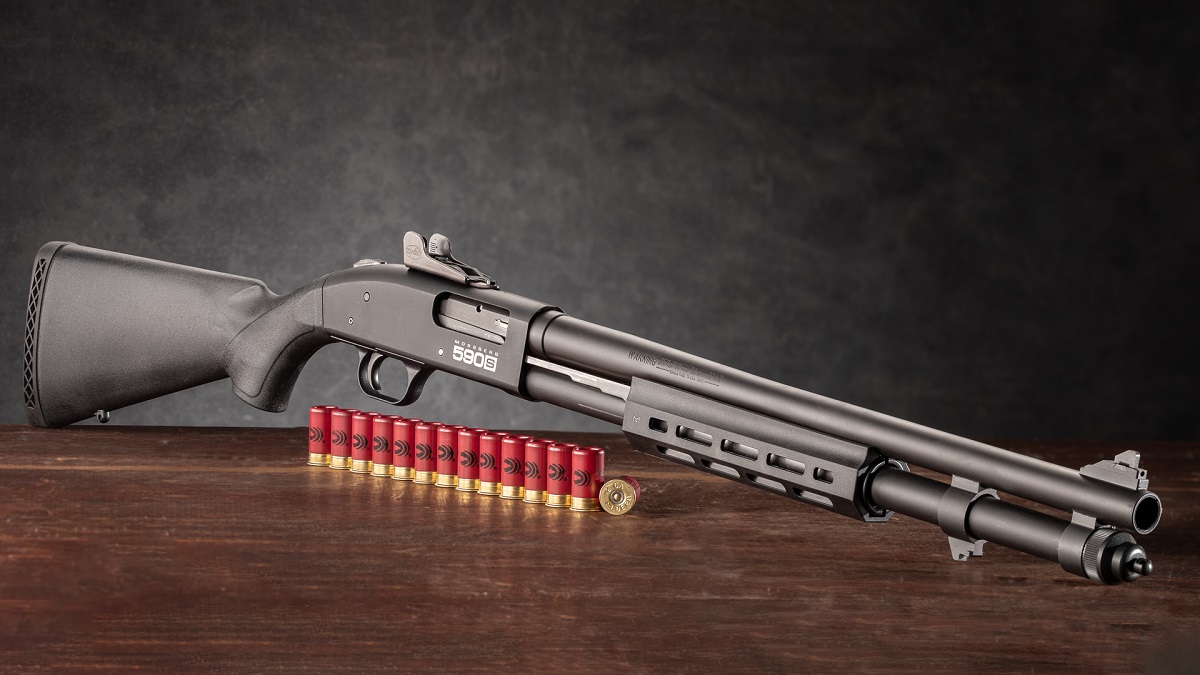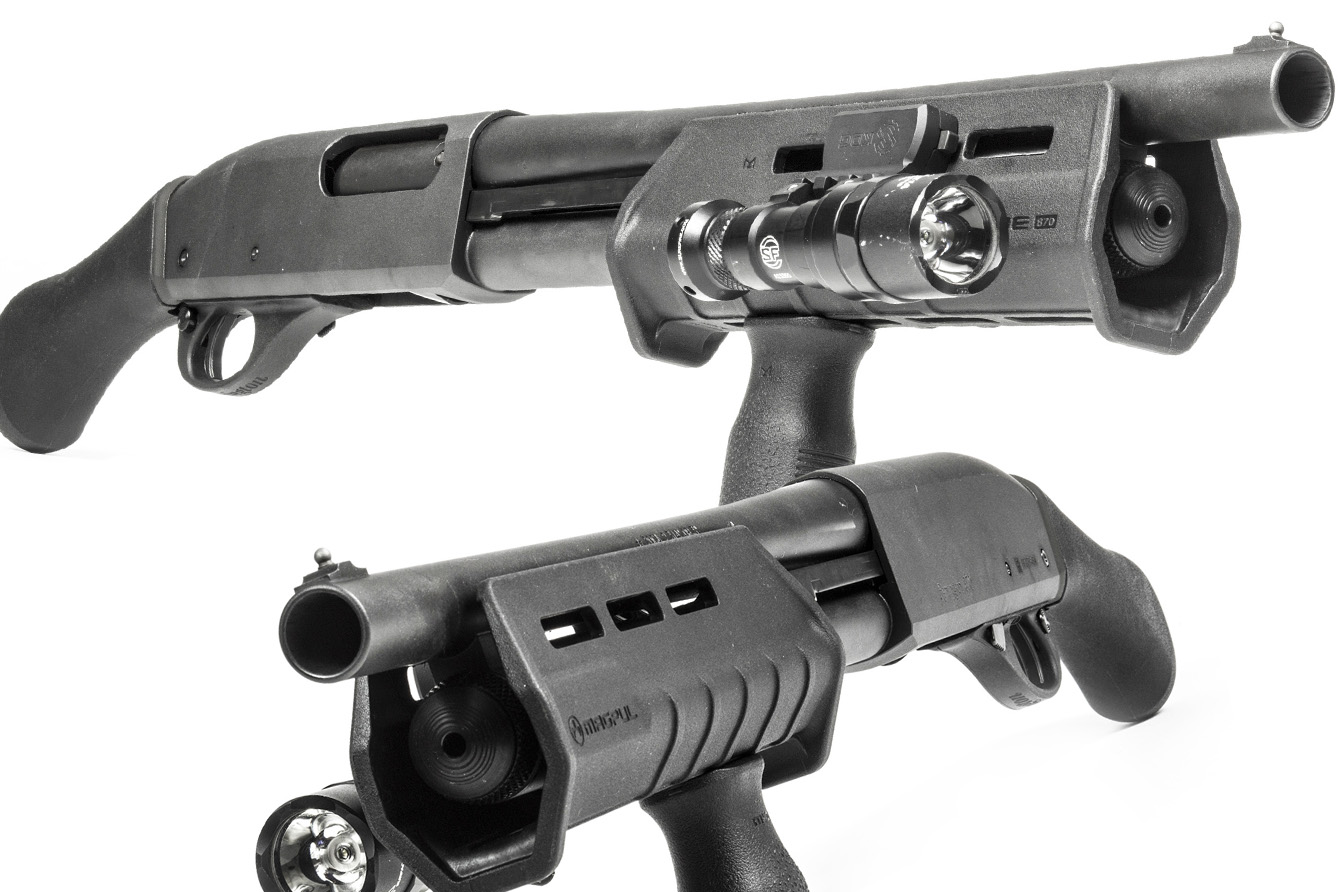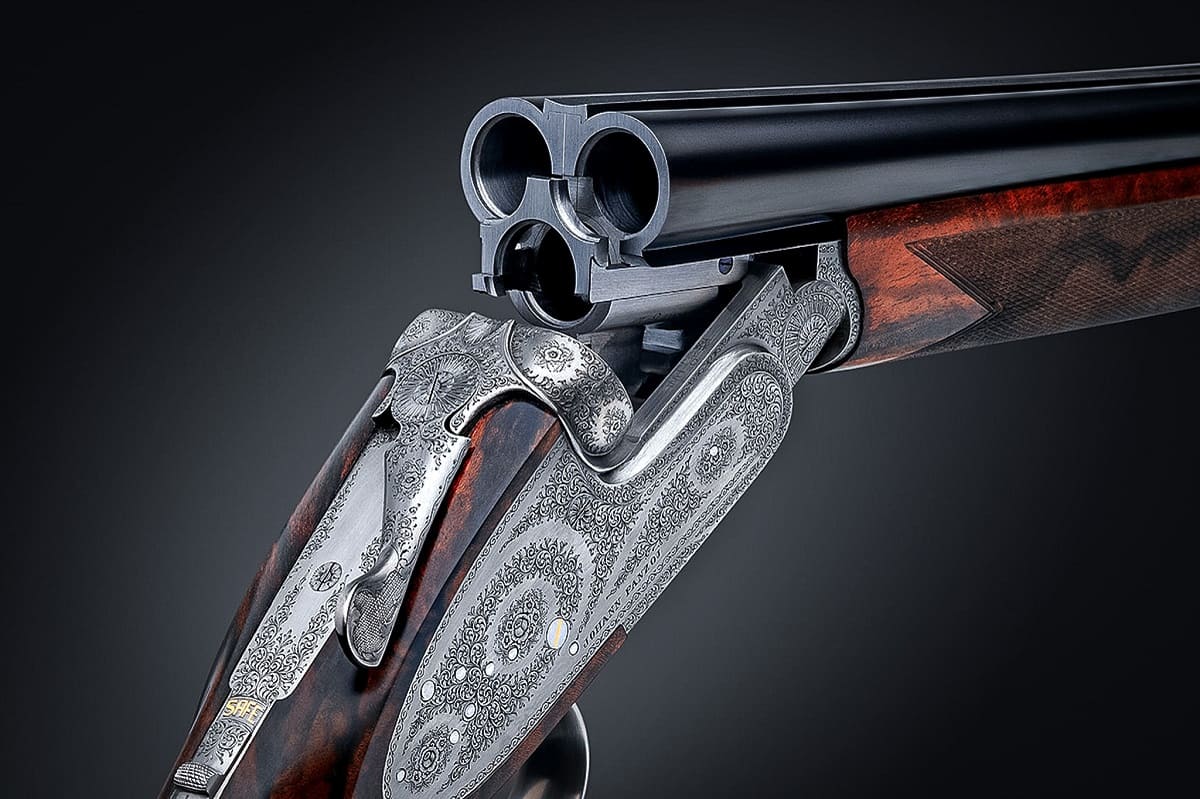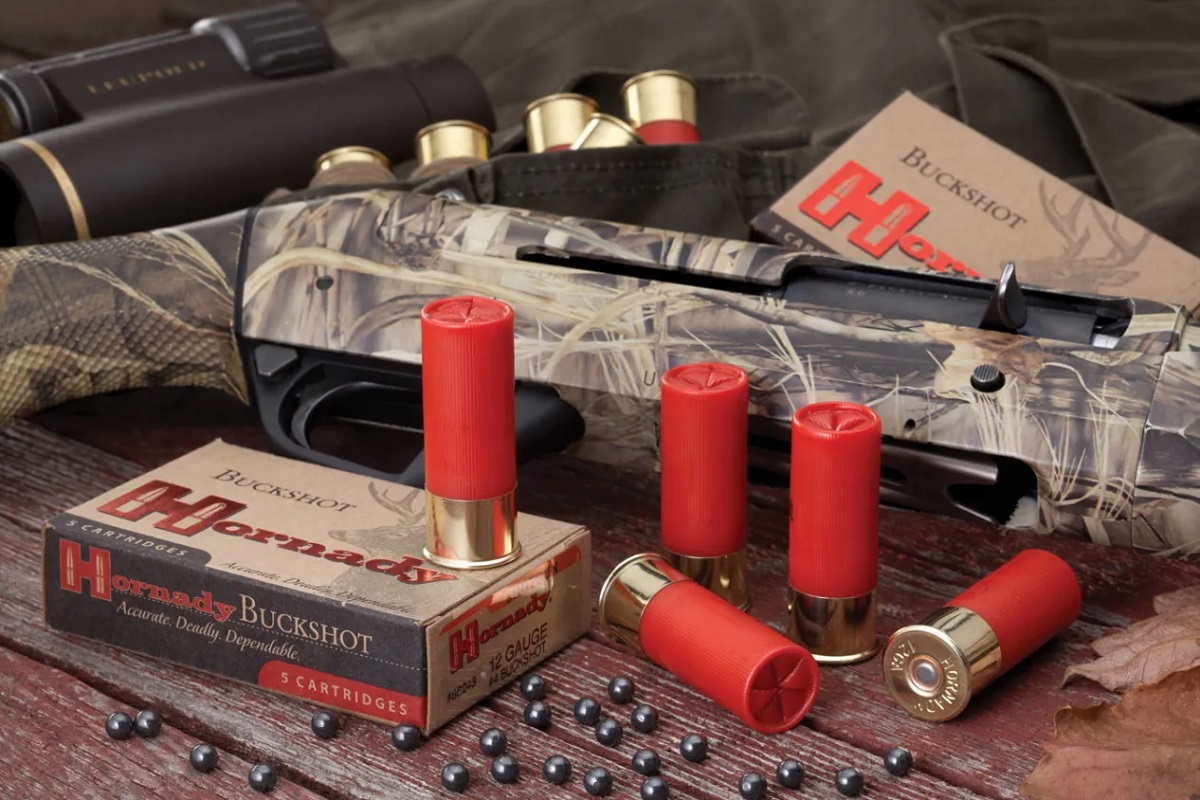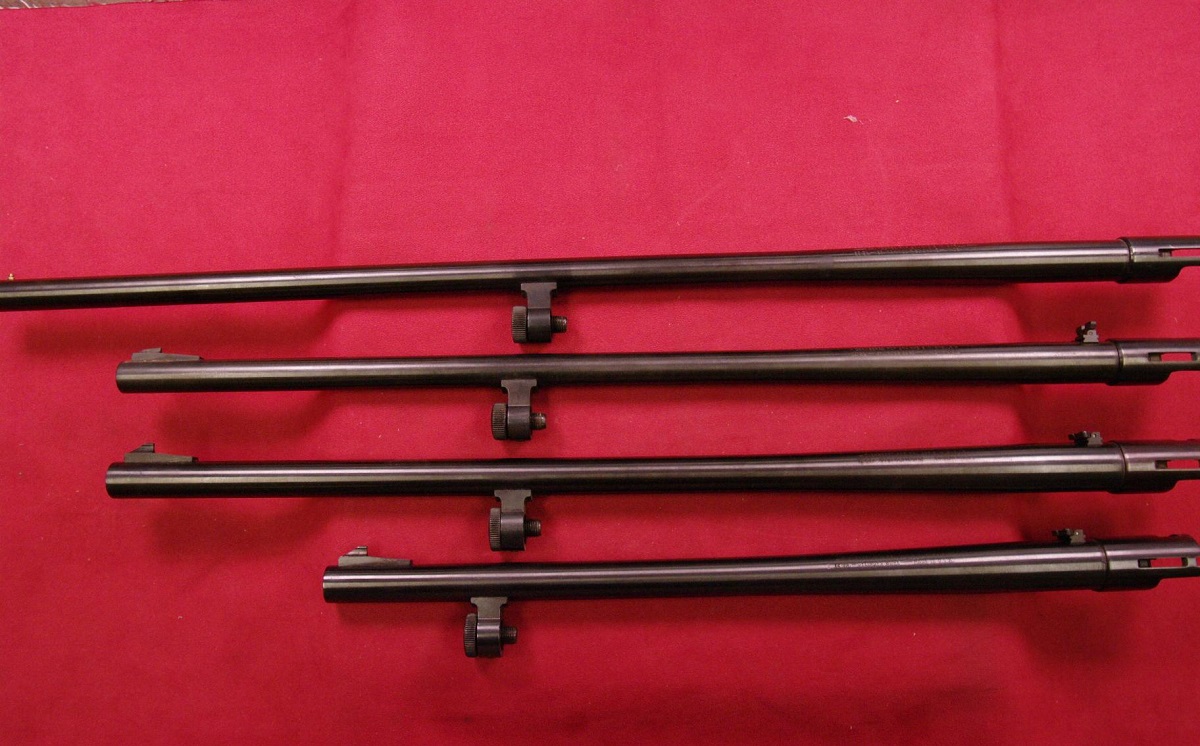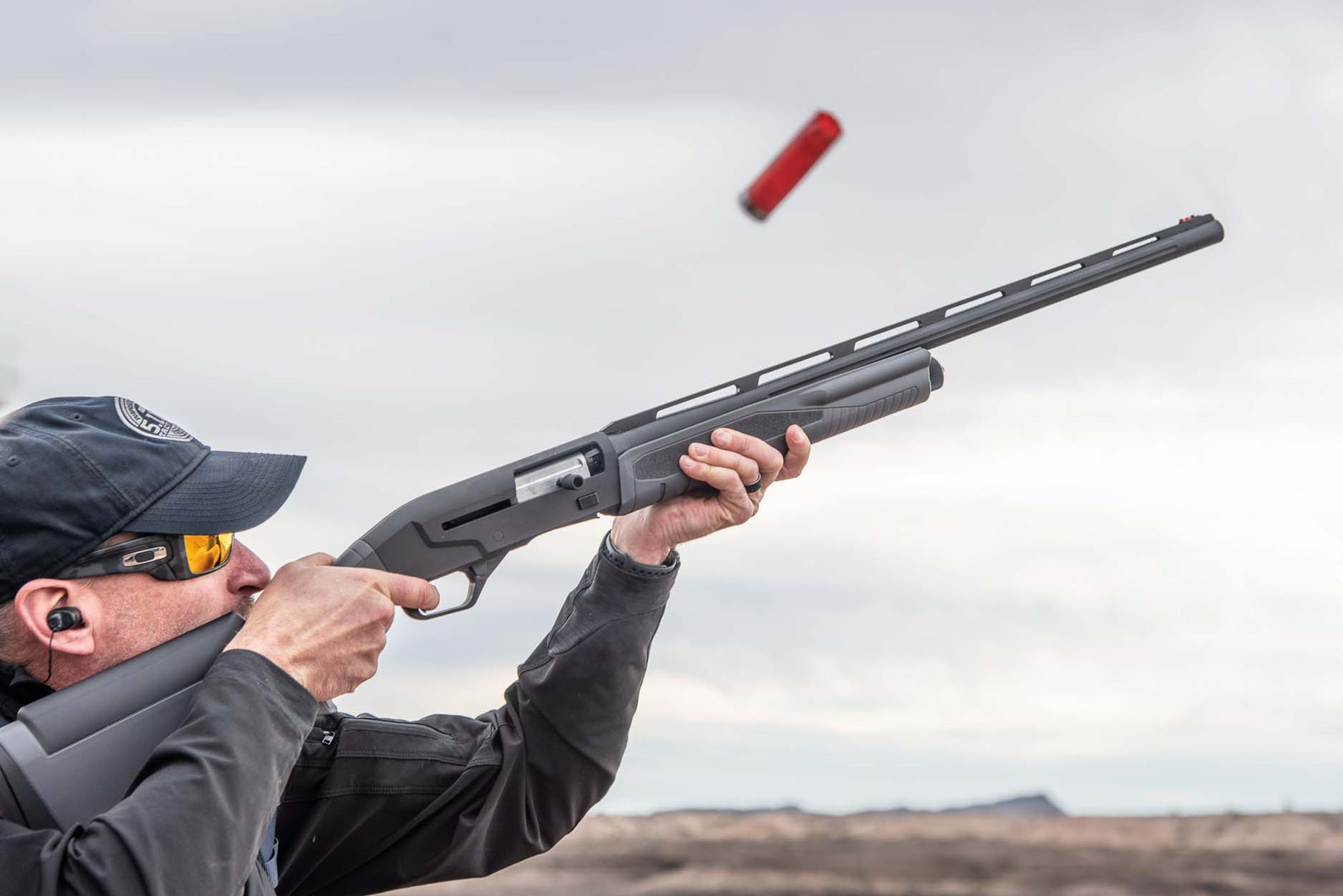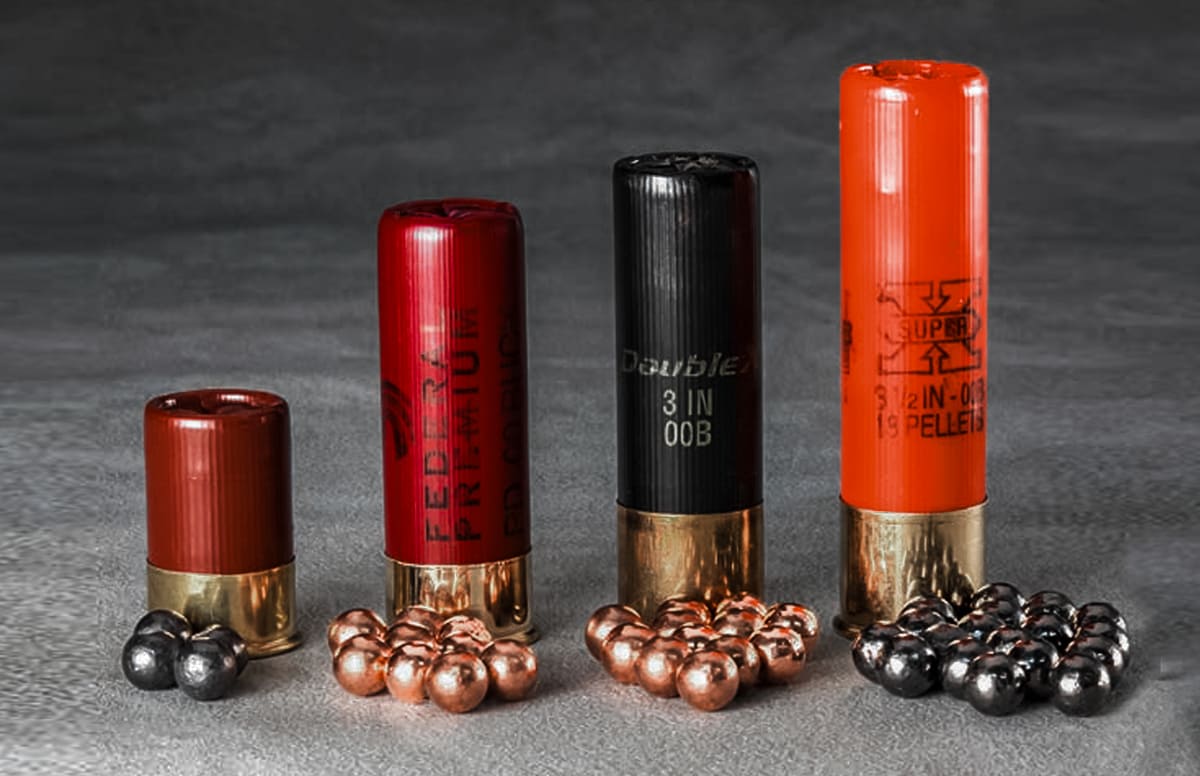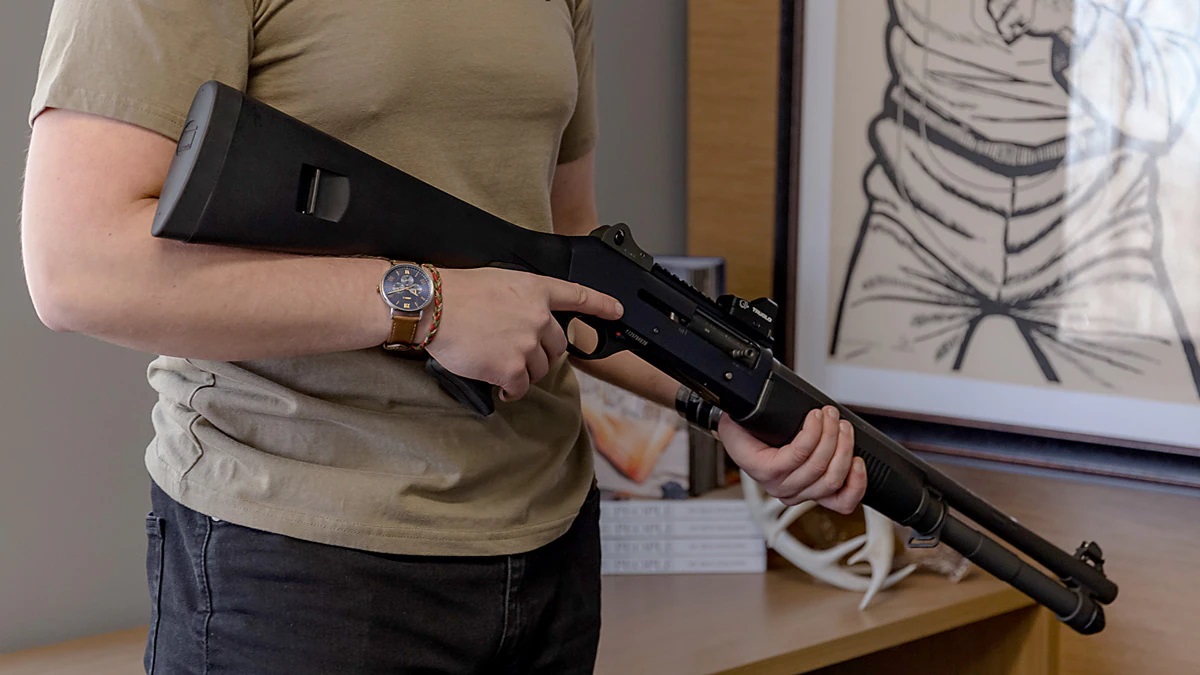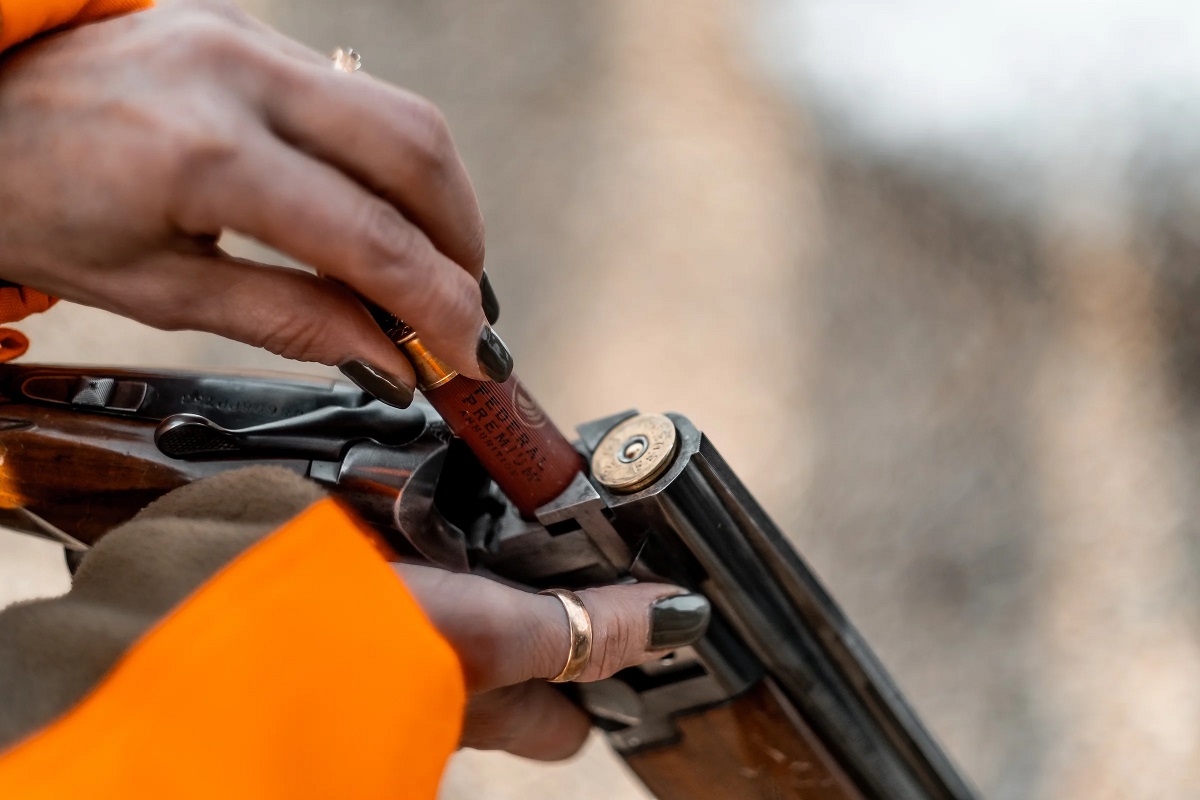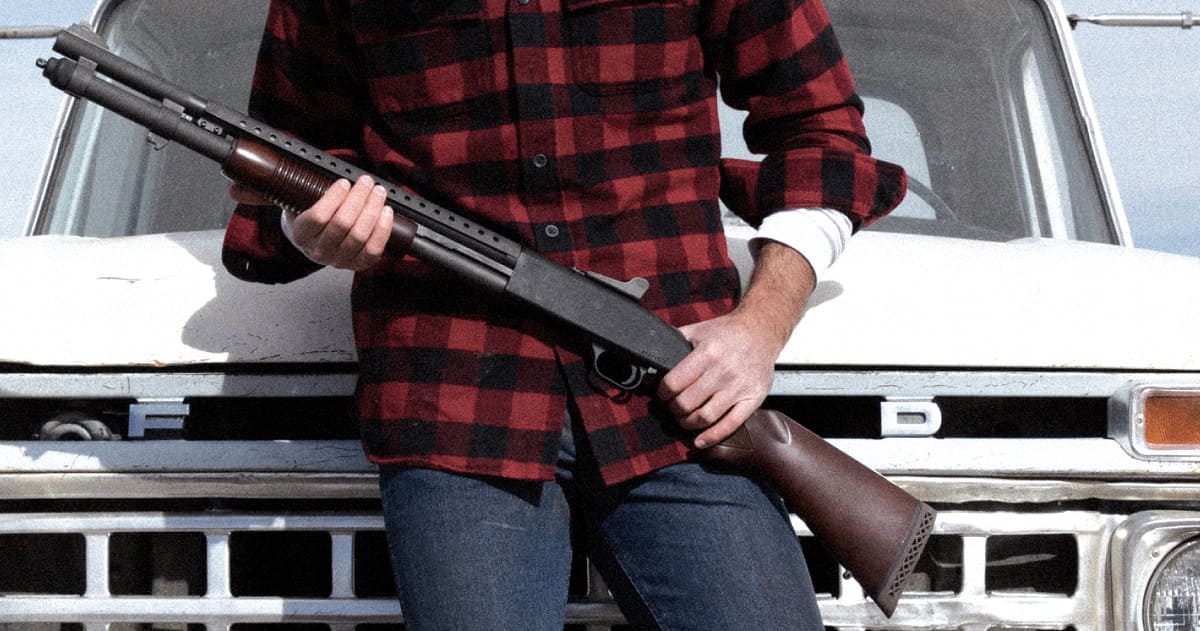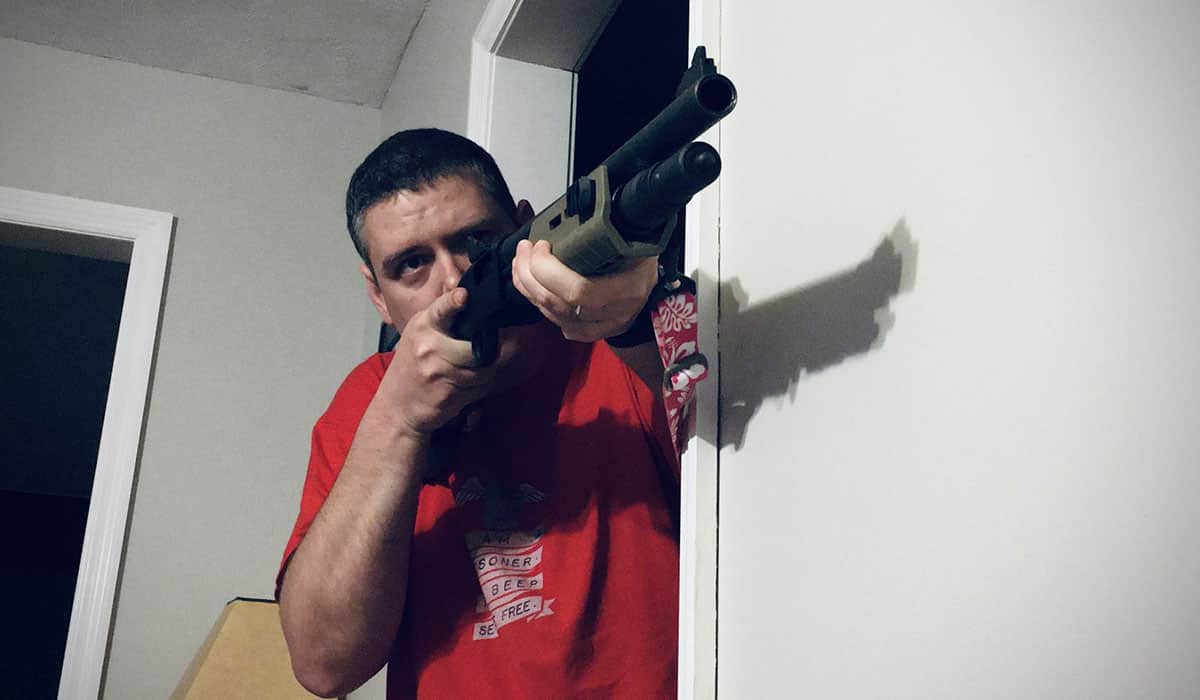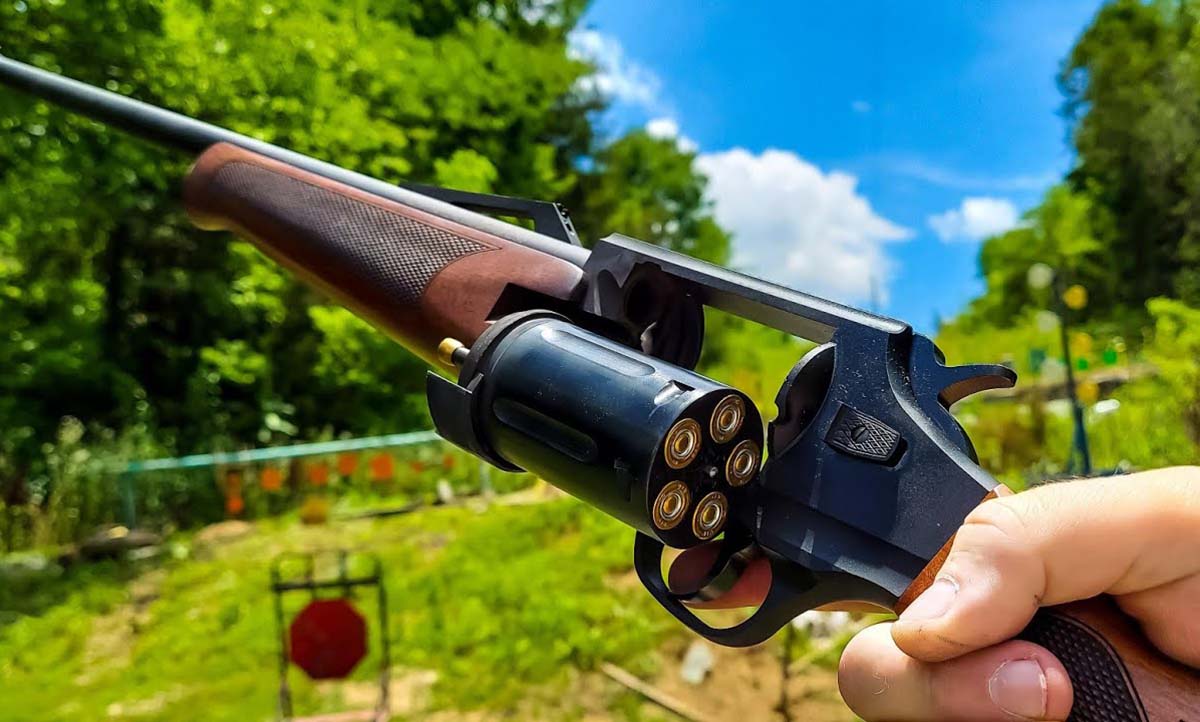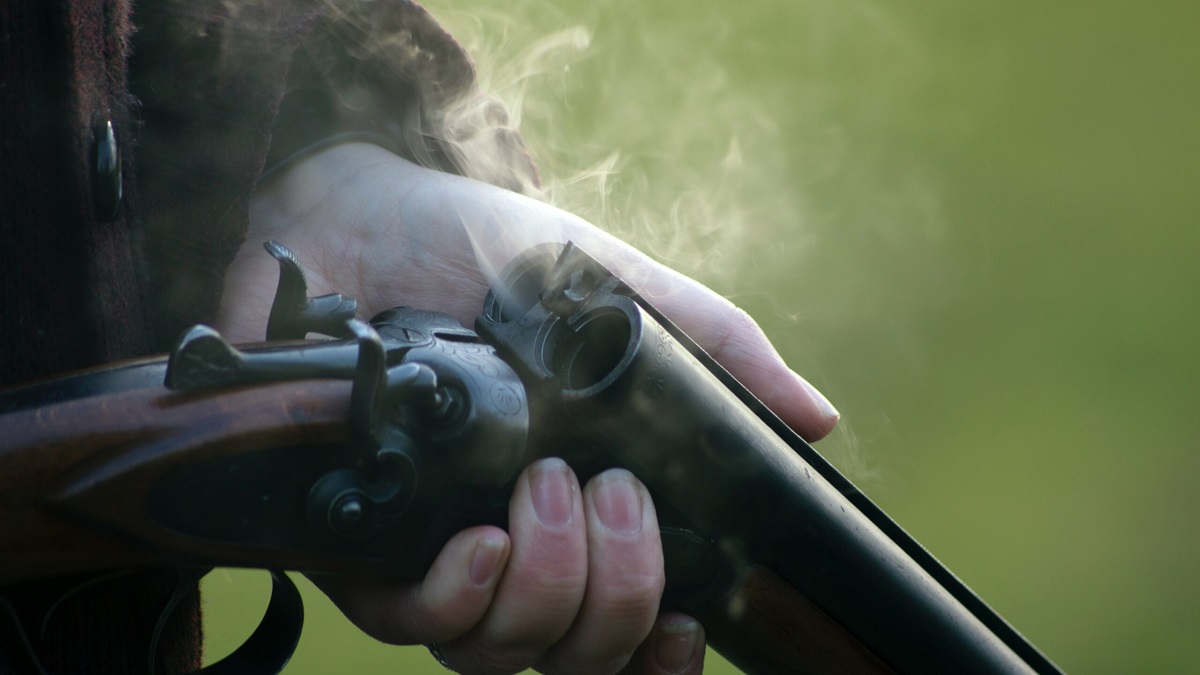Home>Home Security and Surveillance>What Shotgun Choke Is Best For Home Defense
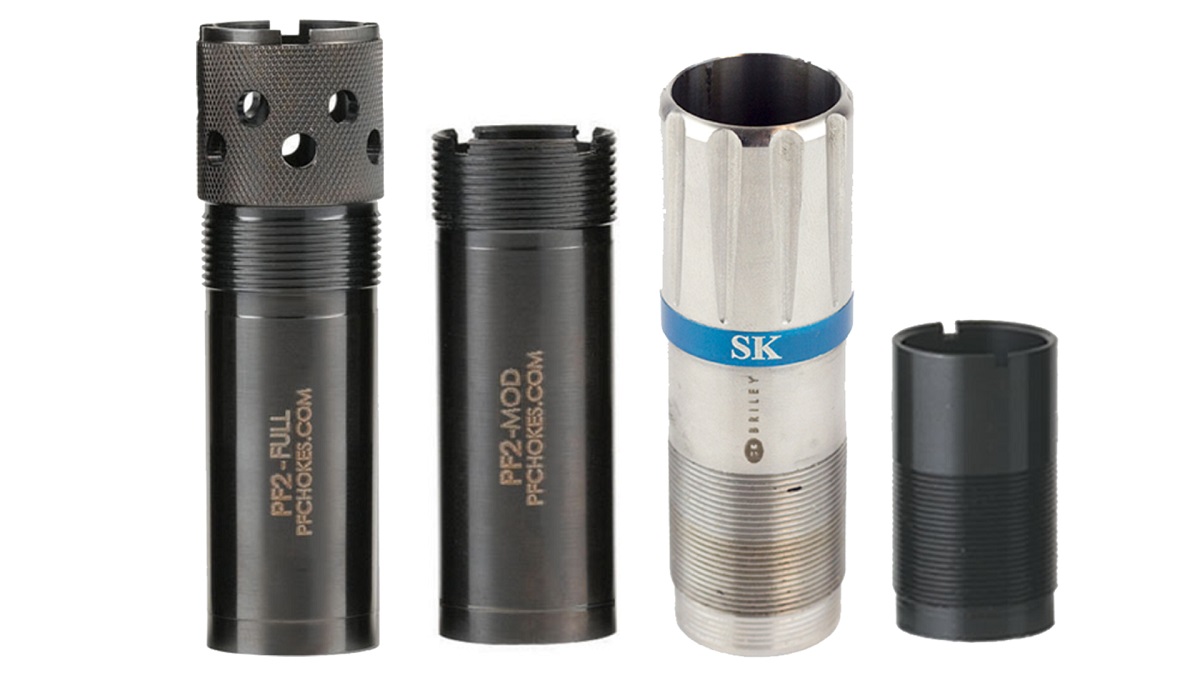

Home Security and Surveillance
What Shotgun Choke Is Best For Home Defense
Modified: March 6, 2024
Discover the ideal shotgun choke for maximum home security and surveillance. Explore your options to find the perfect choice for home defense.
(Many of the links in this article redirect to a specific reviewed product. Your purchase of these products through affiliate links helps to generate commission for Storables.com, at no extra cost. Learn more)
Introduction
Welcome to the world of home security and surveillance. In today’s fast-paced and uncertain world, it has become increasingly important to find effective ways to protect our homes and loved ones from potential threats. When it comes to home defense, many people turn to firearms as a reliable means of safeguarding their properties. One popular choice for home defense is the shotgun.
The shotgun has long been revered for its versatility and stopping power. With its ability to deliver a wide spread of shot, it is an ideal firearm for close quarters combat, making it a formidable choice for defending against intruders. However, when it comes to using a shotgun for home defense, one important factor to consider is the type of choke you choose to use.
Shotgun chokes play a crucial role in determining the spread pattern of the shot. They are essentially attachments that screw onto the end of the shotgun barrel, constricting the shot as it exits the muzzle. By altering the choke, you can control the spread of the shot, making it tighter or wider depending on the situation.
In this article, we will explore the different types of shotgun chokes commonly used for home defense and discuss their benefits and limitations. By understanding the various choke options available, you can make an informed decision about which one is best suited for your home defense needs.
Key Takeaways:
- Choose a shotgun choke based on your home’s layout and likely engagement distances. Consider factors like shot pattern, ammunition compatibility, and personal skill level to enhance your home defense strategy.
- Understanding shotgun choke types, such as Cylinder, Improved Cylinder, Modified, and Full, is crucial for selecting the best option for your home defense needs. Consider factors like spread pattern, precision, and versatility to make an informed decision.
Read more: What Is The Best Home Defense Shotgun
Benefits of Using a Shotgun for Home Defense
When it comes to home defense, the shotgun offers several distinct advantages that make it a popular choice among homeowners. Let’s explore some of the key benefits:
- Stopping Power: Shotguns are known for their immense stopping power. The large and heavy pellets used in shotgun shells deliver a significant amount of force upon impact, making them highly effective in neutralizing a threat quickly and decisively.
- Wide Spread Pattern: Shotguns are unique in their ability to disperse shot over a wide area. This wide pattern makes it easier to hit a target, especially in the high-stress situation of a home invasion. It reduces the need for precise aiming, increasing the chances of hitting the target even under duress.
- Intimidation Factor: The sound of a shotgun being racked or fired can be enough to deter potential intruders. The distinct noise and unmistakable power associated with shotguns can quickly dissuade criminals from continuing their unlawful activities.
- Versatility: Shotguns offer great versatility in terms of ammunition options. From birdshot to buckshot and even slugs, there is a wide range of ammunition available for shotguns. This flexibility allows homeowners to choose the most suitable option based on their specific needs and the potential threat level.
- Less Risk of Overpenetration: As compared to high-velocity rifle rounds, shotgun pellets are less likely to penetrate through walls and potentially harm unintended targets. This reduces the risk of collateral damage within the home.
It is important to note that while shotguns offer numerous benefits for home defense, they also require proper training and responsible handling. Familiarize yourself with local laws and regulations regarding firearms usage, and seek professional guidance to ensure safe and effective use of shotguns for home defense.
Understanding Shotgun Chokes
Before we delve into the different types of shotgun chokes, let’s first understand what a choke is and how it affects the performance of a shotgun.
A shotgun choke is a constriction at the end of the shotgun’s barrel that controls the spread or dispersion of the shot pattern. It works by tightening or narrowing the shot as it exits the barrel, dictating how wide or tight the shot pattern will be at a given distance.
The choke accomplishes this by constricting the shot column, causing the pellets to stay closer together and travel in a more focused manner. This can be beneficial for various shooting scenarios, including home defense, where you may want a tighter shot pattern to increase the chances of hitting your target.
Chokes are typically made of steel, titanium, or other metal alloys, and they come in different sizes and designs, each with its own unique characteristics. Understanding the various choke options available will help you choose the most suitable one for your specific needs.
It’s important to note that shotgun chokes are measured and labeled differently depending on the manufacturer and shotgun model. The most common types of chokes include Cylinder, Improved Cylinder, Modified, and Full chokes.
Next, let’s explore these commonly used shotgun chokes in more detail to get a better understanding of their characteristics and applications in home defense scenarios.
Common Types of Shotgun Chokes
When it comes to shotgun chokes, there are several common types that you will come across. Each type has its own distinct characteristics and uses. Let’s take a look at the most widely used shotgun chokes:
- Cylinder Choke: The Cylinder choke has no constriction, resulting in the widest spread pattern. It provides little to no narrowing of the shot, making it ideal for close-quarters shooting or when using non-toxic ammunition. However, the lack of constriction also means there is limited control over the shot pattern, reducing its effectiveness at longer distances.
- Improved Cylinder Choke: The Improved Cylinder choke slightly constricts the shot pattern, providing a tighter pattern compared to the Cylinder choke. It offers a balance between spread and control, making it versatile for a variety of shooting scenarios. The Improved Cylinder choke is often preferred for home defense as it provides a reasonable spread pattern while still allowing for effective shot placement at close to medium range.
- Modified Choke: The Modified choke offers a moderate constriction, resulting in a tighter shot pattern compared to the Improved Cylinder choke. It provides increased accuracy and a longer effective range, making it suitable for medium-range shooting. The Modified choke strikes a good balance between spread and precision, making it a popular choice for hunters and self-defense purposes.
- Full Choke: The Full choke provides the tightest constriction among the commonly used chokes. It produces the narrowest shot pattern, allowing for precise shot placement at longer distances. The Full choke is typically favored for bird hunting and competitions where precise aiming is crucial. However, for home defense, the tight shot pattern may limit its effectiveness in close-quarters engagements.
It’s worth noting that some shotguns come with interchangeable choke systems, allowing you to swap chokes based on your shooting needs. This versatility can be advantageous for home defense since you can choose the appropriate choke for different scenarios if needed.
Understanding the different types of shotgun chokes helps you make an informed decision about which one will best suit your home defense requirements. The right choke can enhance the effectiveness of your shotgun while providing control over shot spread and accuracy.
Evaluating Choke Options for Home Defense
When it comes to selecting the right choke for home defense, there are several factors to consider. The choke you choose will depend on your specific needs and the layout of your home. Here are some key factors to evaluate when selecting a choke for home defense:
- Home Layout: Consider the size and layout of your home. If you have wide hallways or larger rooms, a choke that provides a broader shot pattern, such as Cylinder or Improved Cylinder, may be more suitable. This allows for a greater chance of hitting your target in close-quarters encounters.
- Engagement Distance: Assess the likely engagement distances within your home. If you anticipate longer engagement distances, such as from one end of the house to another, a choke with tighter constriction, such as Modified or Full, might be more appropriate. This provides a more focused shot pattern, increasing the chances of hitting the target at longer ranges.
- Ammunition Selection: Consider the type of ammunition you plan to use. Different choke designs may have varying compatibility with different types of ammunition. Consult the manufacturer’s recommendations or seek guidance from a firearms professional to ensure proper ammunition-choke compatibility.
- Training and Experience: Evaluate your level of training and experience with shotguns. Tighter chokes, such as Modified or Full, require more precise aiming and may be better suited for those with advanced shooting skills. If you are relatively new to shotguns or have limited training, chokes with wider shot patterns, like Cylinder or Improved Cylinder, can be more forgiving and easier to use effectively.
- Personal Preference: Personal preference also plays a role in choosing the right choke for home defense. Every shooter has their own shooting style and preferences. Experimenting and testing different chokes can help you find the one that feels most comfortable and effective for you.
Ultimately, the best choke for home defense will vary depending on individual circumstances. It is recommended to regularly practice and train with different chokes to become familiar with their performance characteristics and determine which one works best for your particular situation.
Remember, selecting the right choke is just one aspect of effective home defense. Proper training, situational awareness, and adherence to local laws and regulations are equally essential for home security and personal safety.
Read more: What To Put On Home Defense Shotgun
Cylinder Choke
The Cylinder choke is one of the most widely used shotgun chokes, known for its wide shot pattern. It is often considered the “open” choke as it features no constriction, allowing the shot to spread rapidly as it exits the barrel.
For home defense purposes, the Cylinder choke offers a number of benefits. Its primary advantage is that it provides a wide spread pattern, making it effective in close-quarters encounters. In a home defense situation, where engagement distances are typically short, the wide shot pattern can increase the chances of hitting the target.
The Cylinder choke is also useful when using non-toxic ammunition, such as steel shot, which tends to perform best with a more open choke. The absence of constriction in the Cylinder choke allows for the shot column to spread quickly, maintaining energy and velocity even at shorter distances.
However, it’s important to be aware of the limitations of the Cylinder choke. Due to the wide spread pattern, the shot may disperse too much at longer distances, reducing its effectiveness in reaching the target accurately. If you anticipate the need for precise shot placement beyond close-range encounters, a choke with more constriction may be a better option.
When considering the Cylinder choke for home defense, it’s crucial to understand your specific needs and home layout. If you have wider hallways or larger rooms where the engagement distances are short, the wide spread pattern of the Cylinder choke can be advantageous. Additionally, if you live in an area where non-toxic ammunition is required, the Cylinder choke ensures optimal performance with these types of shells.
Ultimately, the Cylinder choke can be an effective choice for home defense scenarios, providing a wide and forgiving shot pattern. However, it is essential to practice with the Cylinder choke to become familiar with its performance characteristics and to determine if it suits your specific home defense needs.
Remember, responsible firearms handling and adherence to local laws and regulations are paramount when using a shotgun or any firearm for home defense.
Aim for a cylinder or improved cylinder choke for home defense. These chokes provide a wider shot spread, increasing the chances of hitting the target in close quarters.
Improved Cylinder Choke
The Improved Cylinder choke is a popular choice for shotgun shooters due to its versatility and balance between spread and control. It offers a slightly tighter constriction compared to the Cylinder choke, resulting in a narrower shot pattern.
For home defense purposes, the Improved Cylinder choke provides several advantages. One key benefit is its ability to offer a balance between spread and shot control. The tighter constriction of the Improved Cylinder choke allows for a more focused shot pattern, increasing the chances of hitting the target accurately at short to medium distances.
When engaging threats in close-quarters situations, such as within the confines of your home, the Improved Cylinder choke provides a reasonable spread pattern that allows for quick and effective shot placement. It offers improved precision compared to the Cylinder choke, making it a suitable choice when you need tighter shot control in a home defense scenario.
The Improved Cylinder choke also performs well with a variety of ammunition types, including buckshot and birdshot. This versatility allows you to choose the ammunition that best suits your needs and preferences while maintaining effective shot patterns.
However, it’s important to note that the Improved Cylinder choke may not be as effective at longer distances, as the shot pattern may start to disperse more. If you anticipate the need for precision shooting beyond moderate distances, you may consider a choke with tighter constriction, such as Modified or Full.
When evaluating the suitability of the Improved Cylinder choke for your specific home defense needs, consider the layout of your home and the likely engagement distances. If your home has a mix of shorter and slightly longer distances, the Improved Cylinder choke can offer versatility by providing an effective balance between spread and shot control.
As with any shotgun choke, it is essential to practice and familiarize yourself with the performance characteristics of the Improved Cylinder choke. Regular range sessions and pattern testing will help you gain confidence and understand its capabilities in various home defense scenarios.
Remember, responsible firearms handling, proper training, and adherence to local laws and regulations are of utmost importance when using a shotgun for home defense.
Modified Choke
The Modified choke is a commonly used shotgun choke that offers a moderate constriction, providing a tighter shot pattern compared to both the Cylinder and Improved Cylinder chokes. This choke strikes a balance between spread and precision, making it suitable for a variety of shooting applications, including home defense.
For home defense purposes, the Modified choke offers several benefits. Its tighter constriction results in a more controlled shot pattern, allowing for increased accuracy and effective shot placement at both short and medium distances. This can be particularly advantageous when engaging threats within the confines of your home, where precise shot placement is crucial.
The Modified choke is known for striking a balance between shot spread and shot control. It provides a controlled shot pattern that offers a good compromise between wide spreads in close quarters and the need for accurate targeting. This balance makes the Modified choke a popular choice for hunters as well as home defense scenarios.
With the Modified choke, you can effectively engage threats within a reasonable range while maintaining a good balance of shot density. It offers better long-range accuracy compared to wider chokes like Cylinder or Improved Cylinder, making it suitable for situations when engagement distances extend beyond close-quarters encounters.
It’s worth noting that the specific performance of the Modified choke can vary depending on the shotgun and ammunition used. Testing and pattern analysis with your firearm and preferred ammunition will allow you to determine the optimal combination for your home defense needs.
When considering the Modified choke for home defense, it’s important to assess your specific requirements. Evaluate the layout of your home, the likely engagement distances, and the desired balance between shot spread and precision. If you anticipate the need for both close and medium-range engagements, the Modified choke can offer versatility and effective shot control.
As always, responsible firearm handling, proper training, and compliance with local laws and regulations are essential when using a shotgun or any firearm for home defense.
Full Choke
The Full choke is a shotgun choke that provides the tightest constriction among the commonly used chokes. With minimal constriction and a narrow shot pattern, the Full choke is primarily designed for longer-range shooting and increased precision.
While the Full choke may not be the go-to option for home defense, it still has its merits in certain situations. Its tight constriction creates a highly focused shot pattern, allowing for precise shot placement at longer distances. This can be advantageous if you anticipate the need for accurate targeting beyond close-quarters encounters.
When using the Full choke for home defense, it’s important to consider the layout and size of your home. In most home defense scenarios, engagement distances tend to be relatively short. The narrow shot pattern of the Full choke may not be as beneficial in these close-quarters situations, as the spread is less forgiving and could potentially miss the intended target.
However, there may be circumstances where the Full choke could be appropriate for home defense, such as when you have a larger property or need to engage threats from a significant distance within your property. In these cases, the Full choke can provide the necessary precision and shot control to effectively engage targets at longer ranges.
It’s important to note that the Full choke requires more precise aiming and can be less forgiving compared to wider chokes like Cylinder or Improved Cylinder. This means that greater attention to sight alignment and proper trigger control is necessary when using the Full choke for any shooting application, including home defense.
If you choose to use the Full choke for home defense, it is strongly recommended to practice regularly to become familiar with its performance characteristics and to maintain accuracy under different shooting scenarios. Pattern testing with various ammunition types will also help you understand the spread and effectiveness of the Full choke at different distances.
Remember, responsible firearms handling, proper training, and compliance with local laws and regulations are crucial when using a shotgun, regardless of the choke being used, for home defense purposes.
Read more: What Shotgun Gauge Is Best For Home Defense
Choosing the Best Shotgun Choke for Home Defense
When it comes to choosing the best shotgun choke for home defense, there are several factors to consider in order to make an informed decision. Here are some key considerations:
- Engagement Distance: Assess the likely engagement distances within your home. If you anticipate close-quarters encounters, chokes with wider shot patterns like Cylinder or Improved Cylinder may be more suitable. For longer distances within your property, a tighter choke like Modified or Full may offer better shot control and accuracy.
- Home Layout: Consider the size and layout of your home. If you have narrow hallways or tighter spaces, a choke that provides a more compact shot pattern may be advantageous. If your home has larger rooms or more open areas, a choke with a wider spread pattern may be more appropriate.
- Ammunition Compatibility: Different chokes may perform differently depending on the type of ammunition used. Consider the ammunition you plan to use for home defense and ensure that it is compatible with the chosen choke. Some shotguns may have specific recommendations from the manufacturer regarding choke and ammunition compatibility.
- Personal Skill Level: Assess your level of training and experience with shotguns. If you are relatively new to shotguns or have limited training, chokes with wider shot patterns may be more forgiving and easier to use effectively. If you have advanced shooting skills and are comfortable with more precise aiming, tighter chokes may be suitable.
- Testing: Pattern testing is crucial in determining the shot spread and effectiveness of different chokes at various distances. Regular range sessions and testing with different chokes and ammunition types will allow you to evaluate their performance and determine which one suits your home defense needs best.
Ultimately, the best shotgun choke for home defense will depend on your individual circumstances and preferences. It is recommended to consult with experts, such as firearms instructors or professionals in the field, who can provide guidance tailored to your specific needs.
Additionally, consider factors beyond the choke selection. Proper training in firearm safety and home defense tactics, as well as adherence to local laws and regulations, are equally important for effective home defense. A well-rounded approach that encompasses these aspects will contribute to your overall safety and preparedness in defending your home and loved ones.
Remember, responsible firearm handling is paramount in any self-defense situation, and ongoing training and practice are essential for maintaining proficiency with your chosen shotgun choke.
Conclusion
When it comes to home defense, choosing the right shotgun choke is a crucial decision that can greatly impact the effectiveness of your self-defense tactics. By understanding the different types of shotgun chokes and evaluating their suitability for your specific needs, you can make an informed decision that enhances your home security measures.
Shotgun chokes play a significant role in controlling the spread of shot patterns and determining the effectiveness of your shots at various distances. The Cylinder choke offers a wide spread pattern that can be advantageous in close-quarters situations. The Improved Cylinder choke provides a balance between spread and shot control, making it versatile for a range of shooting scenarios. The Modified choke offers increased precision and accuracy at medium ranges. Meanwhile, the Full choke provides the tightest constriction, ideal for longer-range engagements.
Choosing the best shotgun choke for home defense requires careful consideration of factors such as engagement distance, home layout, ammunition compatibility, personal skill level, and pattern testing. Assessing these elements will help you select the choke that offers the right balance between shot spread and precision for your specific needs.
However, remember that the shotgun choke is just one aspect of effective home defense. Proper training in firearm safety, situational awareness, and adherence to local laws and regulations are equally crucial. Regular practice with your chosen shotgun choke will also help you become proficient in its use, ensuring your readiness to defend your home and loved ones.
In conclusion, the selection of a shotgun choke for home defense is a personal and individualized decision. Consider the unique characteristics of each choke and evaluate them within the context of your home and self-defense requirements. By doing so, you can equip yourself with a shotgun choke that maximizes your home security and enhances your ability to protect what matters most.
Frequently Asked Questions about What Shotgun Choke Is Best For Home Defense
Was this page helpful?
At Storables.com, we guarantee accurate and reliable information. Our content, validated by Expert Board Contributors, is crafted following stringent Editorial Policies. We're committed to providing you with well-researched, expert-backed insights for all your informational needs.
